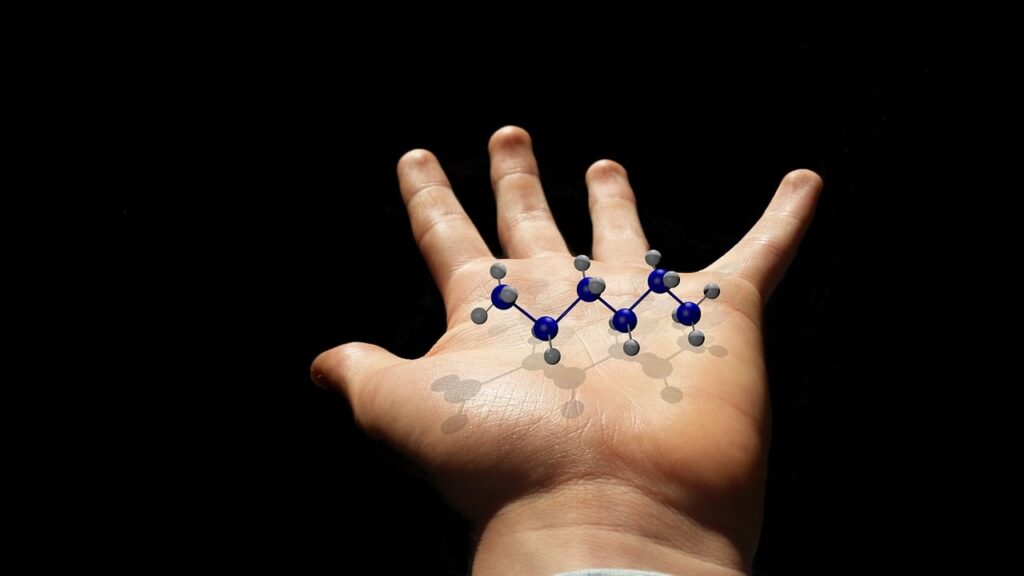How Do You Create Special Effects For Video Games?
In the world of video game development, creating special effects is an art form that transforms digital landscapes into immersive experiences. From explosive pyrotechnics to shimmering magical spells, special effects bring our virtual universes to life, captivating players and heightening the overall gameplay experience. Delving into the process, we explore how visual effects artists harness cutting-edge technology and innovative techniques to craft these mesmerizing elements. Together, we’ll discover the steps, tools, and creativity required to make the fantastical both believable and breathtaking in our favorite games. Have you ever marveled at the stunning explosions, mesmerizing spell effects, or lifelike weather changes in your favorite video games and wondered, “How do you create special effects for video games?” It’s fascinating, isn’t it? Creating these special effects is not just about throwing some glitter and sparks into a scene; it’s a complex art form that blends creativity, technical expertise, and a deep understanding of gaming engines and software.
Getting Started with Special Effects in Video Games
Creating special effects for video games starts with a fundamental understanding of both the artistic and technical sides of game development. We need to grasp the key concepts and basic principles that underpin this aspect of game design. By doing so, we can appreciate the magic behind those sparkling spells and roaring fiery explosions.
Understanding Special Effects
Special effects in video games enhance the player’s experience by adding visual and sometimes auditory elements that make interactions more immersive and engaging. These effects range from simple visual cues, like a glow on a collectible item, to complex phenomena like dynamic weather systems or intricate particle effects in a wizard’s spell.
The Role of Special Effects Artists
Special effects artists, often referred to as VFX (Visual Effects) artists, bring these dynamic elements to life. We play a crucial role in the game development process, collaborating with designers, animators, and programmers to ensure that the visual effects align with the game’s art style and performance requirements.
Tools and Software for Creating Special Effects
Creating these amazing effects requires the right tools. Various software applications facilitate the creation and integration of special effects into video games. Understanding these tools is the first step towards mastering the art of VFX.
Popular Software Programs
Several software programs are widely used in the industry. Each offers distinct features and benefits:
| Software Name | Description |
|---|---|
| Adobe After Effects | Primarily used for motion graphics and compositing, this software helps in creating animations and visual effects. |
| Autodesk Maya | Known for 3D modeling, animation, and rendering, it’s a versatile tool for creating complex effects. |
| Unity | A powerful game engine with an integrated particle system that allows for real-time creation and modification of effects. |
| Unreal Engine | Another major game engine, renowned for its ability to create highly realistic visual effects with its Niagara VFX system. |
Game Engines
Game engines are critical as they bring the visual effects we create to life in the gaming environment. Unity and Unreal Engine are the two most popular engines, but there are others like Godot and CryEngine that also offer advanced visual effects capabilities.
Learning Resources
To effectively use these tools, we can take advantage of numerous online resources. Websites like Udemy, Coursera, and LinkedIn Learning offer courses specifically targeting VFX for video games. Blogs, forums, and YouTube tutorials are also invaluable for learning specific techniques and keeping up with industry trends.

The Process: From Concept to Completion
Creating special effects for video games involves several stages, each crucial to the final outcome. Let’s delve into these stages to understand the workflow better.
Conceptualization
The process begins with an idea. What effect are we trying to create? This could be anything from a mystical portal to a destructive explosion. During this phase, we brainstorm and sketch ideas, often working closely with the art and game design teams to ensure that our concepts align with the game’s overall vision.
Pre-Visualization
Once we have a concept, we move to pre-visualization. This involves creating rough, preliminary versions of the effects. We use basic shapes and movements to map out how the final effect will appear and behave. This stage is essential for experimenting and refining our ideas before moving to more detailed work.
Creation and Animation
After pre-visualization, we start creating the core assets. Using 3D modeling software and particle systems, we craft the individual elements that will make up the final effect. Animation plays a critical role here, as it defines how these elements interact over time. We pay close attention to timing, ease-in/ease-out properties, and the overall flow to ensure the effect feels natural and impactful.
Integration into the Game Engine
Once the assets and animations are ready, we integrate them into the game engine. This step involves importing our work into Unity, Unreal Engine, or another engine, and tweaking it to ensure it works seamlessly within the game environment. We adjust parameters such as size, color, and opacity to make sure the effect blends perfectly with the game’s aesthetic.
Testing and Iteration
The final stage is rigorous testing and iteration. We closely monitor the performance of the special effects within the game, checking for any issues such as frame rate drops or visual glitches. Based on the feedback, we make necessary adjustments to optimize both performance and visual quality. This stage ensures that the effects enhance the gameplay experience without compromising the game’s performance.
Key Techniques in Special Effects Creation
Several key techniques are fundamental to creating compelling special effects. Understanding and mastering these techniques is vital for any aspiring VFX artist.
Particle Systems
Particle systems are the backbone of many special effects. They enable us to create complex phenomena such as fire, smoke, and magic spells by simulating numerous small particles that interact with each other and the environment. Unity’s Particle System and Unreal’s Niagara System are powerful tools for these effects.
Shading and Texturing
Shading and texturing play a crucial role in making effects look realistic. By carefully designing shaders and applying textures, we can create materials that react dynamically to light and other environmental factors. This can make effects like water reflections, metal surfaces, and other complex materials come to life.
Animation Techniques
Using both 2D and 3D animation techniques, we bring our effects to life. Keyframe animation, procedural animation, and skeletal animation are common methods. Each technique has its strengths, and often, the best results come from combining multiple methods to achieve the desired effect.
Scripting and Simulation
Scripting can automate complex interactions and behaviors within our effects. By writing custom scripts in languages like C# for Unity or Blueprint for Unreal Engine, we can create dynamic, interactive effects that respond to in-game events and player actions. Simulations, on the other hand, use physics engines to create natural behaviors such as fluid dynamics and particle collisions.

Challenges in Creating Special Effects
Creating special effects for video games is not without its challenges. We often need to strike a delicate balance between visual fidelity and performance, and we must navigate various limitations and complexities in the process.
Performance Optimization
One of the biggest challenges is ensuring that our effects do not negatively impact the game’s performance. This involves optimizing asset sizes, minimizing draw calls, and efficiently using CPU and GPU resources. Techniques like LOD (Level of Detail), mipmapping, and culling are often used to maintain performance without sacrificing visual quality.
Consistency with Art Style
Our effects must blend seamlessly with the game’s established art style. This requires a deep understanding of the visual language and aesthetic choices of the game. Consistency is key, and even the most spectacular effect can feel out of place if it doesn’t match the game’s overall look and feel.
Technical Constraints
We frequently deal with technical constraints imposed by the game engine, platform, or hardware. These constraints might limit the number of particles we can use, the complexity of our shaders, or the resolution of our textures. Navigating these limitations requires creativity and technical know-how.
Advanced Concepts and Techniques
As we become more adept at creating VFX, we can explore advanced concepts and techniques that push the boundaries of what’s possible in video games.
Real-Time Ray Tracing
Real-time ray tracing has revolutionized the way we create lighting effects in games. By simulating the way light interacts with objects, we can achieve stunningly realistic reflections, refractions, and shadows. While demanding on hardware, this technique adds a new level of realism to our effects.
Procedural Generation
Procedural generation allows us to create highly detailed and varied effects with limited resources. By using algorithms to generate effects on the fly, we can save on memory and storage while creating rich, dynamic environments. This technique is particularly useful for simulating natural phenomena like clouds, water bodies, and terrain.
Machine Learning and AI
Emerging technologies like machine learning and AI are opening new possibilities for VFX. These technologies can be used to automate complex tasks, enhance procedural generation, and even create adaptive effects that learn and respond to player behaviors.

The Future of Special Effects in Video Games
The field of special effects in video games is continually evolving. As technology advances, new tools and techniques are emerging, providing us with ever-greater possibilities for creating amazing visual experiences.
Virtual Reality and Augmented Reality
VR and AR are pushing the boundaries of VFX by creating entirely new immersive experiences. In VR, the effects must account for 360-degree interaction, requiring more detailed work on elements such as lighting, perspective, and depth. AR introduces additional challenges, such as achieving a seamless blend between real and virtual worlds.
Real-Time Collaboration
The future of VFX creation may also see more collaborative workflows with tools enabling real-time collaboration. Imagine multiple artists working on a single effect simultaneously, sharing updates instantaneously, and seeing changes in real time. This collaborative approach can greatly accelerate the creative process and open up new avenues for innovation.
Advanced Simulation Techniques
With the increasing power of modern GPUs, real-time complex simulations such as fluid dynamics, destruction physics, and cloth simulation are becoming more feasible. These advanced techniques can create highly realistic and interactive environments that enhance the overall gaming experience.
Conclusions and Final Thoughts
Creating special effects for video games is an intricate and rewarding process. It requires a blend of artistic vision, technical skill, and collaborative effort. By understanding the tools, techniques, and challenges involved, we can appreciate the incredible artistry behind our favorite game moments.
So, the next time you marvel at a breathtaking explosion or an ethereal magical spell, you’ll know some of the secrets behind how they were brought to life. Whether you’re an aspiring VFX artist or simply a gaming enthusiast, understanding the magic behind special effects can deepen your appreciation for the incredible world of video games.




